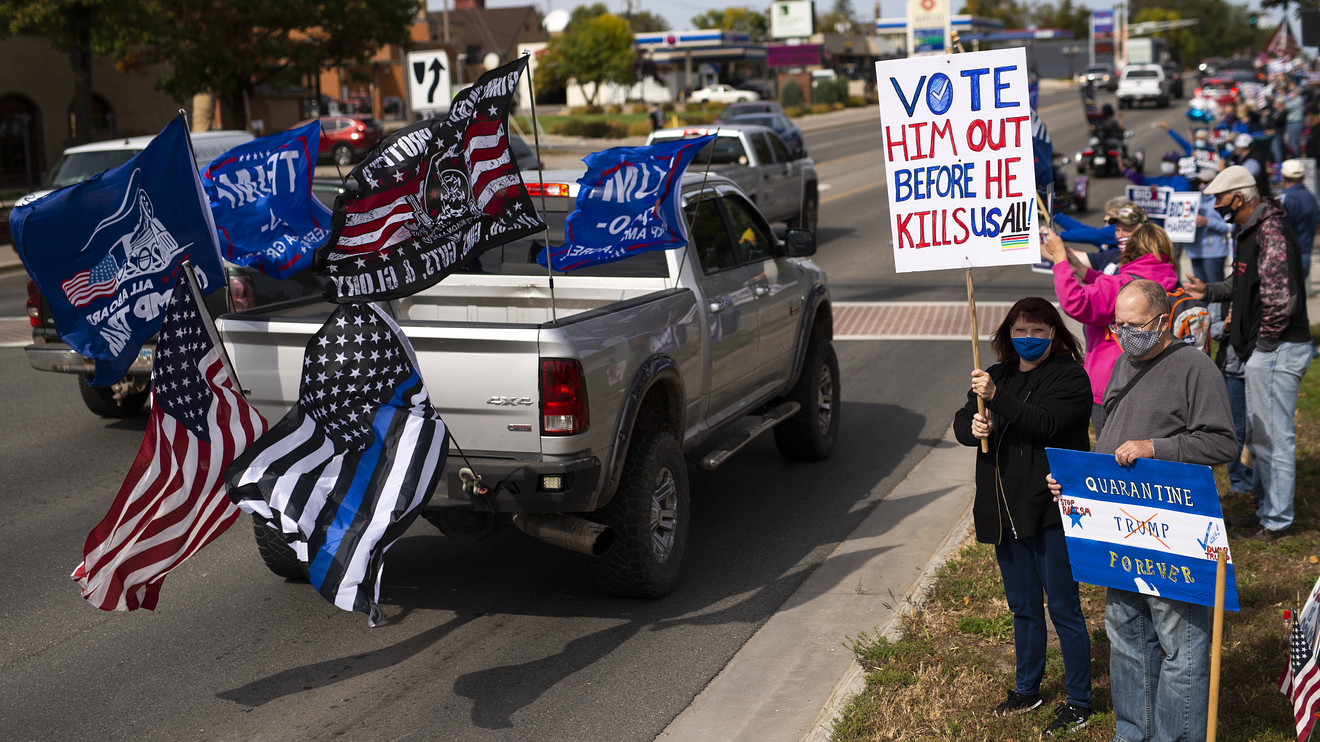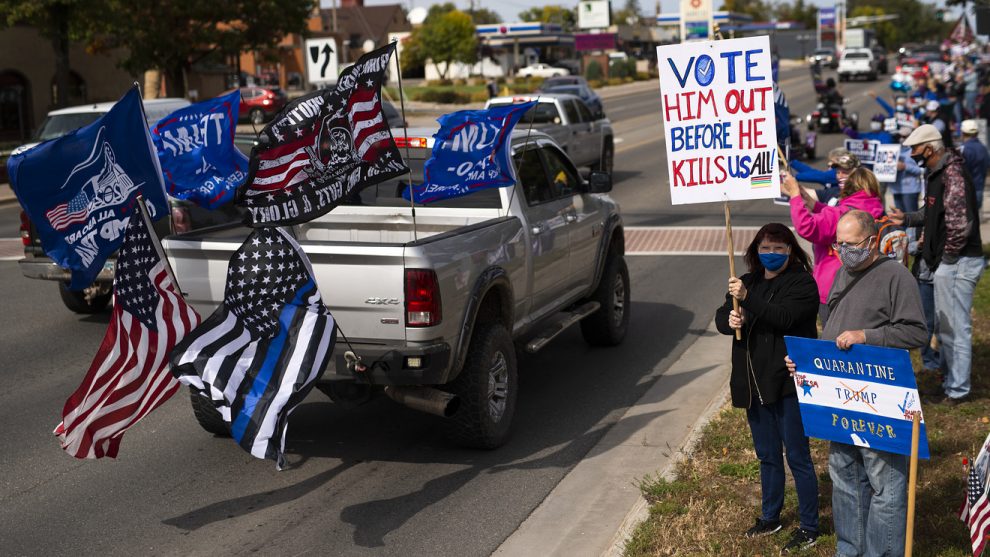
Investors would be wise to study messy presidential elections of the past, the most recent being the 36-day standoff between Vice President Al Gore and Texas Gov. George W. Bush in 2000. The Supreme Court wound up calling it for Bush, making the son of our 41st president the 43d.
Some have noted that U.S. stocks fell during this period, with the S&P 500 index SPX, +1.59% declining 8.4% between Nov. 7 and Dec. 15, and the implication being that political uncertainty was behind the decline. I’m not convinced of this, given that stocks had actually been falling sharply since March 2000, when a nasty bear market began — the first leg of a 49% bloodbath that didn’t end until October 2002. The post-election drop in 2000 was merely one part of the overall plunge.
But election messes and market downturns are like snowflakes: No two are ever quite the same. In 2000, just one state — Florida — caused a five-week standoff. Now consider that this year there could be half a dozen or more election messes, including Florida itself, occurring at the same time.
How all this plays out is anybody’s guess. Little wonder then, as MarketWatch’s William Watts, citing the Cboe Volatility Index futures curve, notes that “traders see the potential for an extended period of volatility beyond the election.”
From an investment standpoint, the lack of election clarity won’t apply to Congress. Democrats will not only maintain their 34-seat advantage in the House, but will likely expand it. And in what would be a titanic shift, current analyses of Senate races points to a Democratic takeover of that chamber too.
There is a 68% chance of this, notes The Economist, meaning that current Majority Leader Mitch McConnell of Kentucky, who is favored to win re-election, will be shunted to the minority. All of this will likely be known by the time you wake up on Nov. 4.
But because clarity on the congressional end of Pennsylvania Avenue will be negated by a lack of it on the other end, companies may be more hesitant about forward-looking matters such as capital expenditures, hiring and more. Would corporate tax rates change? Could trade tensions with China ease? Could renewable energy get a boost? What about infrastructure spending? Uncertainty over these and many other matters will remain until we know who will sit behind the Resolute Desk on the morning of Jan. 21.
Read:Tuesday’s presidential debate: Biden must ‘aggressively’ push back against Trump to win, expert says
Such questions about the future direction of policy are quite normal, and if they were the only things we were unsure of this year, I doubt we’d lose too much sleep over them. But this isn’t the case now.
The post-election period that we are about to enter will be far more different and far more dangerous than anything Americans have ever experienced.
This time, for the first time in the 231-year history of the presidency, we have an incumbent president—Donald Trump—who says he cannot guarantee a peaceful and honorable transfer of power should he lose to former Vice President Biden. Trump has said the only way he can lose the election is if it’s rigged—thus, he reasons, there’s no need for him to leave the White House.
There have been many bitterly fought elections in American history of course, but never — never — has a president refused, in the event of defeat, to commit to a peaceful and honorable transfer of power.
The worst it ever got was on Inauguration Day 1801, when President John Adams, deeply bitter about losing to Thomas Jefferson, skipped town before dawn, refusing to participate in his successor’s swearing in. President Herbert Hoover and the man who crushed him in 1932 — Franklin D. Roosevelt — barely spoke as they rode to Capitol Hill for FDR’s swearing in. Harry Truman, who had declined to seek re-election, and Dwight Eisenhower weren’t exactly buddies when they made the same journey in 1953.
Yet these transitions and others occurred peacefully and honorably. Even Richard Nixon went willingly after he resigned in 1974, boarding his helicopter on the South Lawn with a grin and trademark two-handed wave as he departed.
But Trump is different. In refusing to guarantee what every predecessor has done — step aside quietly and humbly for a successor should he lose, he has undermined the very constitution that he swore to “preserve, protect and defend” and made a mockery of our cherished republic. He thinks he’s making America great? This isn’t the way to do it.
How bad could things get if he loses but won’t admit it and won’t go? What happens? Such uncertainties, such dangers, and the volatility it would spark — this is what is new.
There may be Trump supporters who think this is all some big joke on the part of the president – just another way for him to “own the libs.” Telling 330 million Americans and an anxious world that you can’t guarantee the kind of behavior that for more than two centuries has been the hallmark of our democracy isn’t the way to do it. I suppose they think trying to suppress voting, destroying post office equipment, and urging supporters to be vigilante-like poll watchers on Nov. 3 is all part of the yuks.
We’re well past the point where anyone should ever give this man the benefit of the doubt.
It’s not overly dramatic to say that among the things that have always separated American democracy from the world’s tin-horn dictatorships is that we have always had leaders who have respected the limits to their authority, and who also respected the orderly and peaceful transfer of that authority to a successor.
We, right now, don’t have this. Market volatility? That could be the least of our problems.











Add Comment